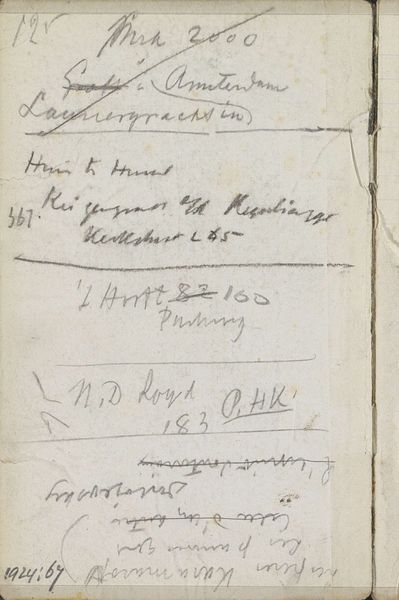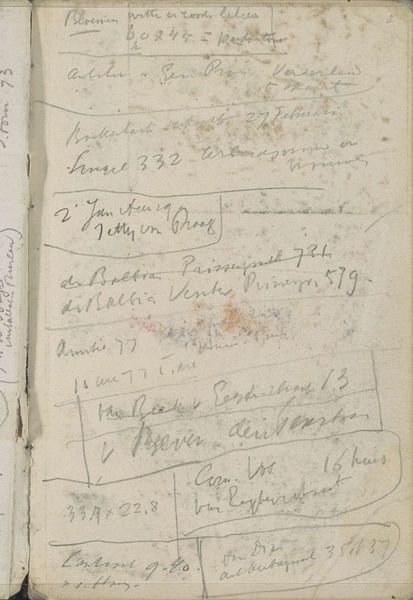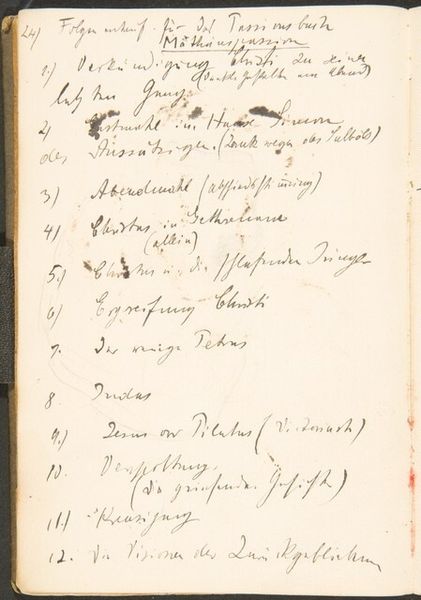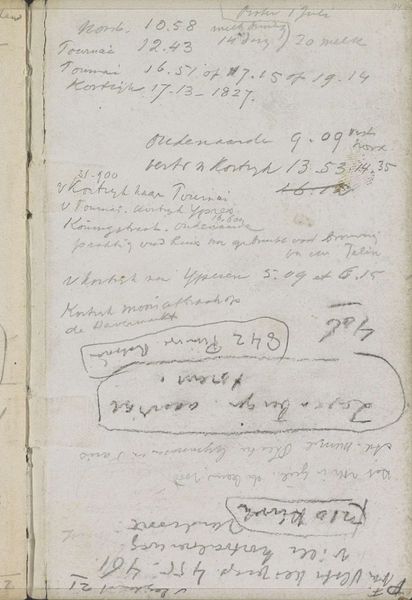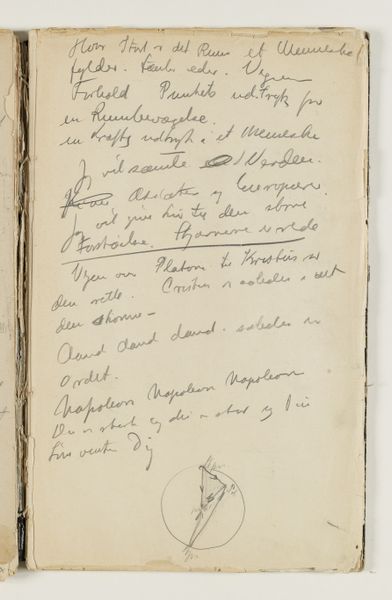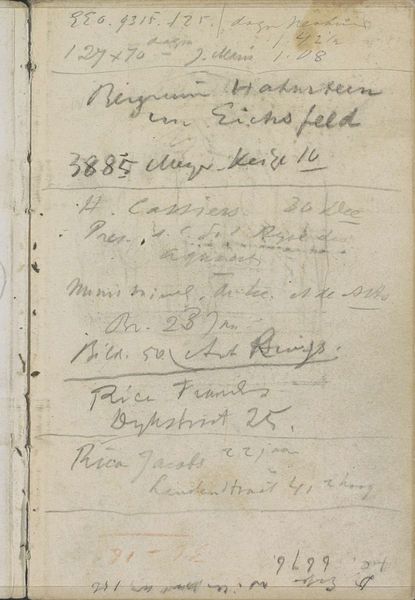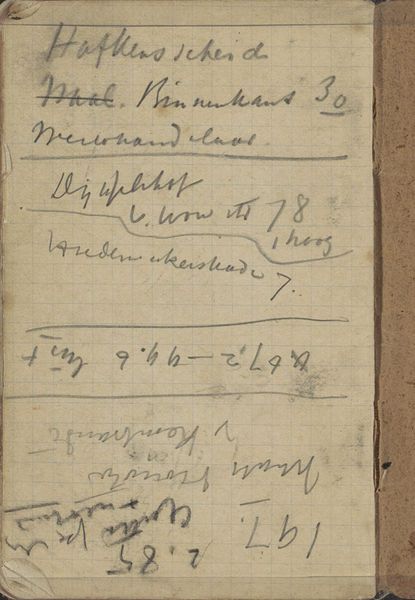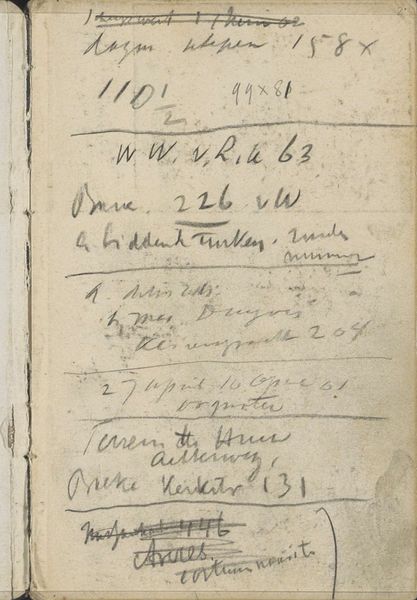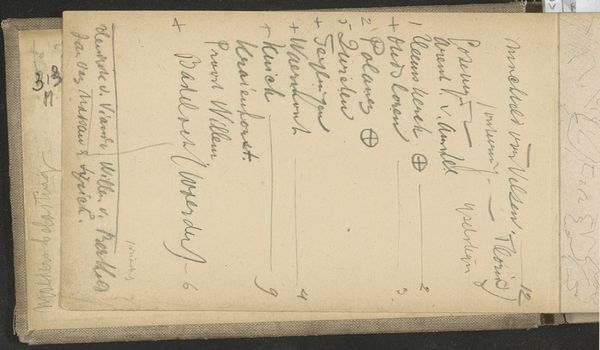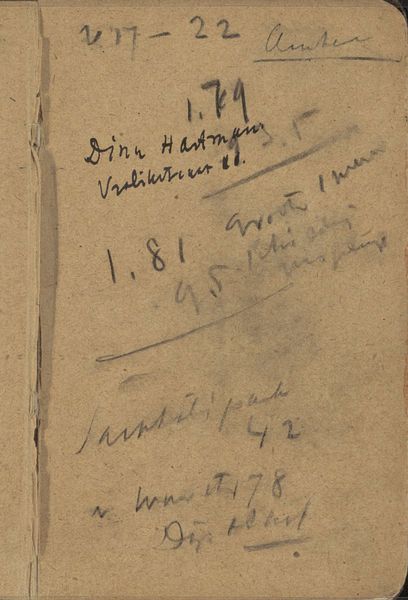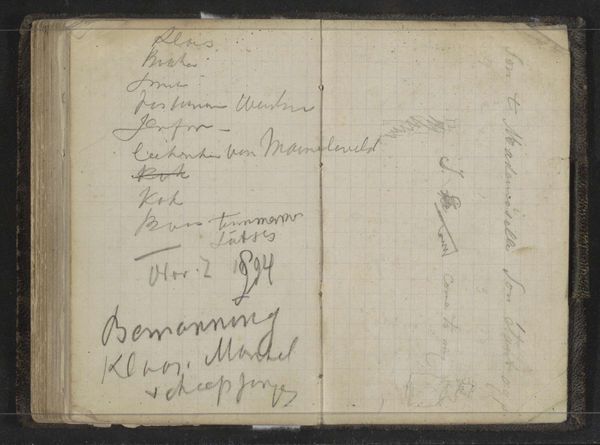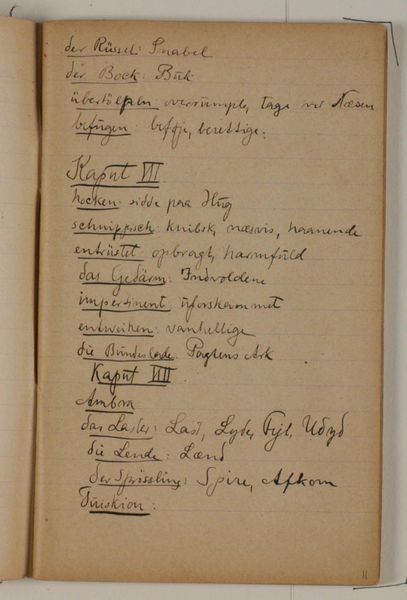
drawing, paper, pencil
#
drawing
#
aged paper
#
hand written
#
hand-lettering
#
hand drawn type
#
hand lettering
#
paper
#
personal sketchbook
#
hand-written
#
hand-drawn typeface
#
pencil
#
sketchbook drawing
#
sketchbook art
Copyright: Rijks Museum: Open Domain
Curator: Here we have George Hendrik Breitner's "Annotaties," made around 1915 or 1916. It's a drawing using pencil on paper, housed right here at the Rijksmuseum. Editor: It’s essentially a page ripped from a sketchbook, and the handwritten notes give the piece such an intimate feel. What can you tell me about Breitner's choice of materials? Curator: Look closely. What do you notice about the paper itself? It appears quite ordinary, not unlike the kind used for everyday bookkeeping. The pencil work reinforces this sense of the quotidian; the annotations feel more akin to a merchant’s ledger than preparatory sketches for a grand painting. Do you think this impacts our understanding of the artistic process at the time? Editor: Definitely! Seeing it as almost an "accounting" of his experiences challenges the idea of art as purely inspired and detached from daily labor. Curator: Precisely! The use of cheap materials also prompts us to reconsider notions of value. We are faced with a work whose material cost is minimal, yet it now sits enshrined in a museum. How does that shift our understanding of Breitner’s work and legacy? Editor: It suggests that value isn’t intrinsic to the materials themselves, but rather assigned through the act of creation and, later, through cultural validation. Perhaps, Breitner’s notes detail transactions or production expenses that later become cultural history. Curator: Yes, in placing emphasis on labor, materiality, and social context, it asks us to see art not as isolated genius but an outcome of the cultural context in which he operated, democratizing the definition of 'art' itself, blurring traditional distinctions between high art and everyday creation. Editor: I never thought about approaching a drawing quite that way, looking at its immediate, accessible nature rather than the inherent artistic intention. Curator: It makes you wonder how the understanding of production and reception might intersect, doesn’t it?
Comments
No comments
Be the first to comment and join the conversation on the ultimate creative platform.
